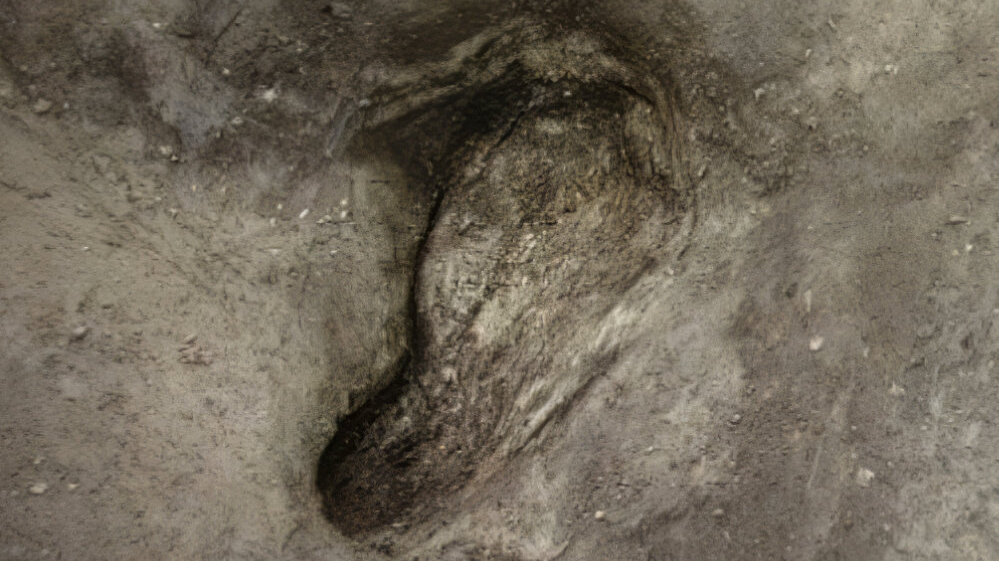In an open birch and pine forest overgrown with grass there is a lake a few kilometers long and a few hundred meters wide. Herds of elephant, rhino and even-toed ungulates come to its muddy shores to drink and bathe. In the middle of this scenery stands a nuclear family of the »Heidelberg people«, a species of people that is now extinct.
“It could have looked like this or something similar 300,000 years ago in Schöningen, Lower Saxony,” explains the first author of the study, Dr. Flavio Altamura, fellow of the Senckenberg Center for Human Evolution and Palaeoenvironment at the University of Tübingen (SHEP) and continues: “For the first time we have examined the fossil footprints of two sites in Schöningen in detail. These traces, together with information from sedimentological, archaeological, paleontological and paleobotanical analyses, provide us with insights into the paleoenvironment and the mammals that once inhabited the area. Among the footprints are also three tracks that match hominin footprints – dating back around 300,000 years, they are the oldest human tracks known in Germany and probably come from Homo heidelbergensis.”
The scientists assign two of the three human traces in Schöningen to young individuals who used the lake and its resources in a small mixed-age group. »Depending on the season, plants, fruits, leaves, shoots and mushrooms were available around the lake. Our finds confirm that the extinct human species lived on the shores of lakes or rivers with shallow water. This is also known from other sites with Lower and Middle Pleistocene hominin footprints,” says Altamura. The various tracks in Schöningen show a snapshot of a family’s everyday life and can provide information about the behavior and social composition of the hominin group as well as about the spatial interaction and coexistence with herds of elephants and other, smaller mammals, the study says. “Because of the tracks left by children and young people, it’s probably more of a family outing than a group of adult hunters,” summarizes the archaeologist and expert on fossil footprints.
In addition to the human tracks, the team analyzed a series of elephant tracks belonging to the extinct species Palaeoloxodon antiquus: a straight-tusked elephant that was the largest land animal at the time, with adult males weighing up to 13 tons. »The elephant tracks we discovered in Schöningen reach a remarkable length of 55 centimetres. In some cases we also found fragments of wood in the ruts that the animals had pressed into the ground, which was soft at the time,” explains Dr. Jordi Serangeli, head of the excavation in Schöningen, and adds: “One trace also comes from a rhino – Stephanorhinus kirchbergensis or Stephanorhinus hemitoechus – and is the first footprint of this species from the Pleistocene that was found in Europe.”
